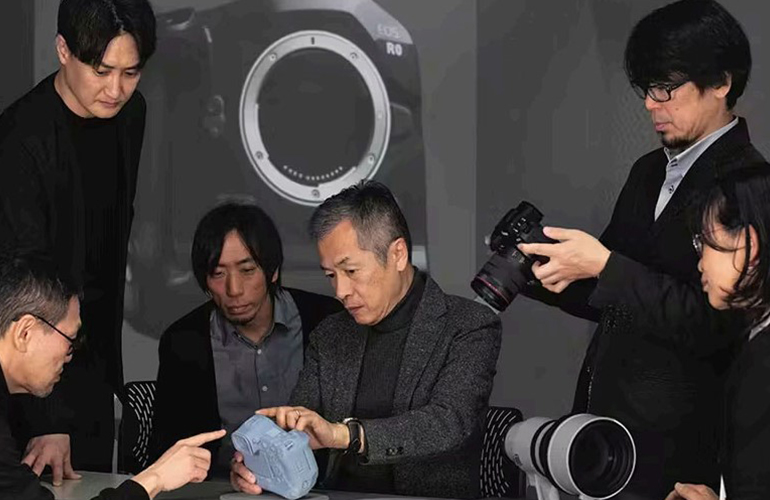What Canon’s Design Aims for
Canon’s design approach is to "pursue designs for the users," based on a thorough understanding of the user through onsite observations and studies of usage environments.
No matter how well a product performs, it is not a good product if using it creates stress. Canon’s products have expanded from those for general users such as cameras and printers to those for professional users in the medical and industrial fields such as CT scanners, semiconductor lithography equipment. Consequently, the role required of design has also expanded. Its scope has widened from the design of individual products to the design of spaces surrounding products. In the case of large equipment, it is increasingly important to construct a space design that takes into consideration the operators' movement flow and efficiency of their work in the place where the equipment operates. Despite the changing domains and role of design, Canon consistently values deepening our understanding of users and pursuing usability. For example, designers who are experts in ergonomics visit sites where our products are used, speak directly with customers, observe how products are used, and incorporate those insights into designs. In the case of medical equipment, the design is considered by studying the patient's psychological and physical condition as well as the ease of use of the device by medical professionals. In these ways, we pursue designs that blend usability and aesthetic beauty.

Application case study:
imageFORCE series, office multifunction devices
Canon designs products based on the universal design concept, which aims to make products usable by everyone, regardless of age, gender, nationality, or physical ability. We identify points for improvement in our designs by envisioning multiple ways a product might be used and verifying the design against these use cases.
One example is the imageFORCE series, office multifunction devices. The shape of the front side of the top feeder allows users to lift it easily from anywhere and operate even if one hand is full or an arm is injured. In addition, the control panel is designed to be easily reached and operated by all users, including wheelchair users, regardless of their body size or posture. Canon has created a Universal Design Guide that organizes issues that may arise when customers use our products. It is intended to be used internally to help developers engage in product development that is always based on insights from the customer's perspective.
Universal Design Guide: https://global.canon/en/design/ud/guide/

Application case study:
Aquilion Rise, a multi-position CT scanner
When designing medical equipment, our considerations include not only the operator’s ease of use but also the patient’s posture, movement flow, and even their sightlines to ensure patient peace-of-mind during examinations.
Aquilion Rise is a multi-position CT scanner that can scan patients in three positions: standing, sitting and lying, which is the general posture used for CT scans. With this capability, the scanner is expected to enable the early detection of lesions that previously went unseen.
Aquilion Rise features rounded surfaces to ease patient anxiety and tension and relieve psychological and physical stress, after studying where patients look when entering an examination room and their psychological state while undergoing an examination.
For large products such as medical equipment and semiconductor manufacturing equipment, it is essential to have designers in charge of space design to make effective use of limited space. They create a detailed simulation of the space and reproduces every detailed movement of users with motion capture technology. After multiple verifications, the designer can realize a design optimized for the usage conditions.



